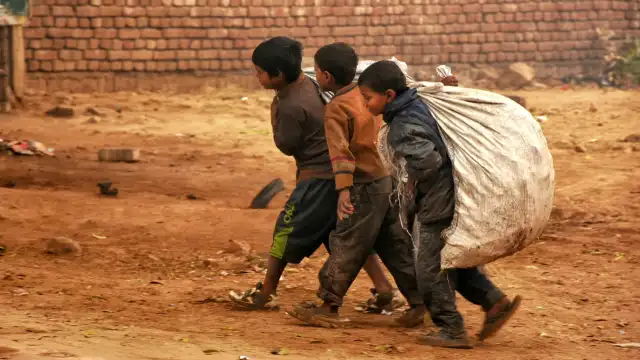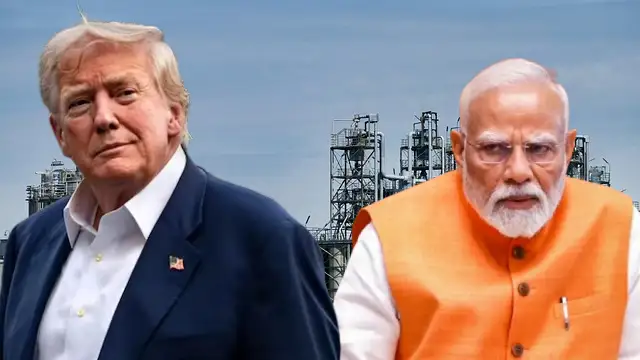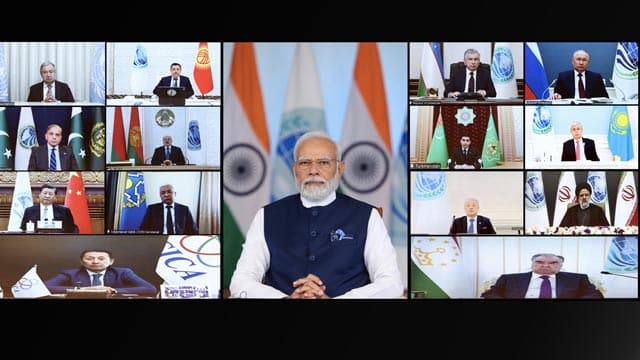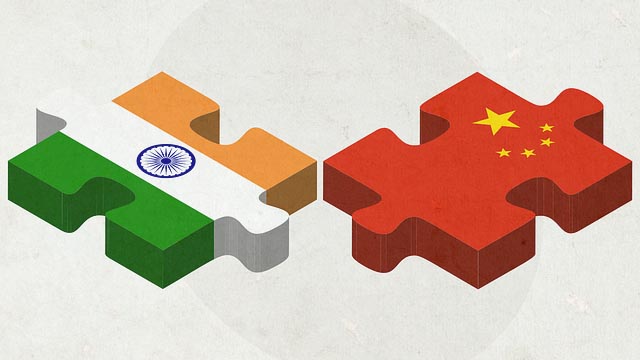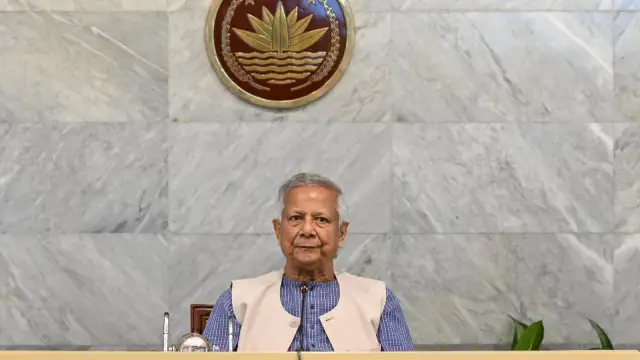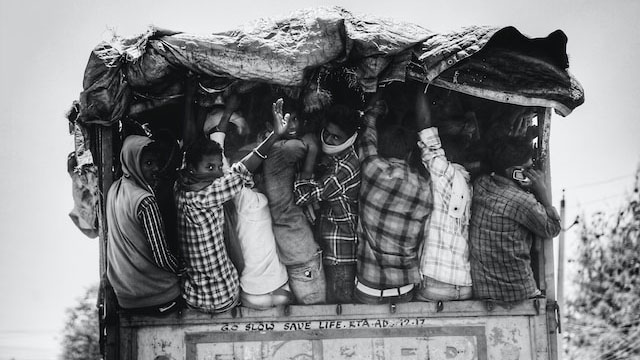The World Bank’s recently released data showcasing India’s dramatic poverty reduction deserves scrutiny beyond the headline figures. At least experts believe so. While the World Bank’s assessment shows extreme poverty declining from 27.1% in 2011-12 to 5.3% in 2022-23, lifting 269m people above the poverty line, these achievements emerge from a complex web of methodological changes that have fundamentally altered how poverty gets measured in India.
Although India’s mainstream media, which parrots and amplifies the federally ruling far-right Bharatiya Janata Party’s (BJP) narratives, has been celebrating the news as a major achievement for the South Asian country, careful analysis shows it’s not so.
The World Bank’s recognition of this progress, based on the $3 per day international poverty line, represents genuine development gains.
Yet beneath these encouraging statistics lies a more intricate story about measurement methodology, statistical manipulation and the persistent challenges facing India’s most vulnerable populations.
Here is something experts warn about, but the mainstream media obliterates.
When methodology transforms reality
India’s transition from the Uniform Reference Period (URP) to the Modified Mixed Recall Period (MMRP) methodology fundamentally altered its poverty calculations.
This shift alone creates poverty rate differences of 10-12 percentage points—determining whether 125m Indians qualify as poor or non-poor, economists claim.
The MMRP uses different timeframes for measuring consumption—seven days for perishables like vegetables, 30 days for most food items, and 365 days for durables such as clothing.
While this approach may improve consumption measurement accuracy, it produces dramatic statistical effects that artificially reduce poverty counts.
The quantitative impact proves staggering.
The 2011-12 survey showed 21.8% poverty using the old methodology (URP) compared to just 12.2% using the new approach—a 10.9 percentage point difference.
The 2009-10 survey revealed an even larger 12.3 percentage point gap.
This methodological shift represents one of the largest statistical reclassifications in global poverty measurement history.
India’s Household Consumption Expenditure Survey underwent substantial design modifications for 2022-23.
The survey introduced computer-assisted personal interviews, expanded coverage to over 500 goods and services, and crucially altered sampling methodology.
Critics highlight that sampling changes potentially exclude the poorest households by using land and car ownership criteria that favour affluent sections.
Expert consensus exposes statistical problems
Leading economists have reached a remarkable consensus in criticising India’s poverty measurement approach.
Long ago, Nobel laureate Angus Deaton demonstrated that shifting recall periods artificially reduces poverty estimates by approximately half.
He emphasises that “politics and statistics interact problematically” in India’s poverty measurement.
Indian economist Utsa Patnaik delivers perhaps the most damning critique.
Using original nutrition-based criteria, she argues that approximately 75% of Indians are poor, rather than what the official figures suggest.
Her analysis shows current poverty lines measure destitution rather than poverty, with energy intake at official poverty thresholds falling below 1,500 calories in many states—well below basic survival needs.
The international academic community has noted fundamental problems with India’s approach.
Expert committees have produced widely differing poverty estimates based on methodological choices.
The Tendulkar Committee set poverty lines at Rs 27 per day for rural households and Rs 33 per day for urban, while the Rangarajan Committee recommended Rs 32 per day for rural and Rs 47 per day for urban households.
The government strategically adopted lower Tendulkar estimates while rejecting higher Rangarajan recommendations that would have shown 38.2% national poverty.
The World Bank’s internal documents reveal significant concerns about India’s approach despite official recognition of progress.
The Bank warns that “sampling and data limitations suggest that consumption inequality may be underestimated” and acknowledges that methodological changes, rather than economic transformation, explain sudden poverty reduction claims.
Speaking to the East Post on the impact of changing methodology, Ishita Mukherjee, a professor of economics at Calcutta University, says, “Tweaking of survey methodology from URP to MMRP definitely has an effect. World Bank’s MMRP will result in the reporting of more consumption items than URP or MRP.”
“Tendulkar used MRP and obtained Poverty Lines in the rural and urban areas. This method uses a seven-day recall of some items and a year’s recall for low-frequency consumption items. This would include many items of consumption, which otherwise would not have been reported,” she said, adding, “Definitely, it results in a lower poverty level.”
International standards reveal measurement distortions
India’s poverty measurement represents a global outlier, generating results inconsistent with international best practices.
The World Bank’s recent update of international poverty lines from $2.15 to $3 per day dramatically illustrates this problem.
Under the revised threshold, India’s poverty rate increases from the claimed 2.3% to 5.3%, while using the higher $3.65 threshold shows 28.1% poverty.
The World Bank has switched between different data sources for India, creating unprecedented volatility in poverty estimates.
In 2022-24, the Bank used private Consumer Pyramids Household Survey data showing 12.9% extreme poverty, then switched to India’s official data showing 2.3% poverty.
This represents a 10.6 percentage point reduction in one year—described by statisticians as implausible without massive economic transformation.
International organisations have flagged numerous methodological concerns.
India’s poverty lines rank among the world’s lowest in real purchasing power terms, with $2.15 per day equalling approximately Rs 5,200 monthly for a family—amounts independent economists describe as “absurdly low”.
Alternative research using more realistic thresholds produces poverty estimates ranging from 26.4% to over 34%.
The Foundation for Agrarian Studies found 26.4% poverty using Rangarajan Committee methodology, while independent economists estimate between 34m to 373m people below realistic poverty lines.
Highlighting the World Bank’s inconsistency, Ms Mukherjee asked, “The criteria of the World Bank have changed the numbers. But India is a country of growing inequality and lessening extreme poverty. How do numbers reconcile?”
“There is a serious problem of estimation of consumption in the consumption surveys. We had earlier raised concerns about consumption surveys when they were withheld earlier. The discrepancy between consumption data and national accounts data is widening, she added.
These massive discrepancies highlight how methodological choices determine poverty statistics rather than reflecting economic reality.
Alternative indicators challenge progress narratives
While official poverty statistics suggest dramatic progress, alternative development indicators present a more complex picture, questioning the comprehensiveness of poverty reduction.
India’s nutrition statistics remain alarming despite claimed economic progress: 35.5% of children under five are stunted, 19% are wasted, and 57% of women and 67% of children are anaemic.
The Global Hunger Index ranks India 105th out of 127 countries with a “serious” hunger level. India even ranks lower than several poverty-stricken African nations.
UN estimates indicate 195m undernourished people—a quarter of the world’s total.
Over 74% of India’s population cannot afford a healthy diet according to FAO data, directly contradicting Prime Minister Narendra Modi’s claims of widespread poverty reduction
Income inequality trends provide perhaps the strongest contradiction to poverty reduction narratives.
The Gini coefficient for India is estimated to be around 0.35 in 2025, with over 27m unemployed people.
Oxfam’s 2023 report, “Survival of the Richest: The India Story”, claims that India’s top 10% rich own more than 80% of the concentrated wealth. The wealthiest 10% own more than 72% of the total wealth, the top 5% own nearly 62% of the total wealth, and the top 1% own nearly 40.6% of the total wealth in India.
Economist Thomas Piketty’s research shows historically unprecedented inequality levels, with India experiencing a “Billionaire Raj” phenomenon where 119 billionaires’ fortunes increased tenfold over a decade.
However, some indicators do support genuine progress.
India’s National Multidimensional Poverty Index shows improvement from 29.17% in 2013-14 to 11.28% in 2022-23, with 248.2m people escaping multidimensional poverty.
Significant improvements in sanitation, rural electrification and basic infrastructure access represent measurable development gains.
Anti-poverty programmes show mixed results
India’s extensive anti-poverty programmes have achieved a measurable impact, but cannot fully account for the dramatic poverty reduction claimed in official statistics.
The Mahatma Gandhi National Rural Employment Guarantee Act (MGNREGA), the world’s largest employment guarantee scheme, has reduced rural poverty by 11% based on rigorous impact evaluations.
The reformed Public Distribution System (PDS), which linked biometrics to food rationing, reduced leakages from 58% to 43% nationally, with dramatic improvements in well-performing states.
Direct Benefit Transfer (DBT) schemes have eliminated intermediaries and reduced corruption, transferring Rs 6.61 trillion in the financial year 2024-25 with estimated savings of 1.14% of GDP.
The Pradhan Mantri Jan Dhan Yojana opened 535.3m bank accounts, enabling financial inclusion for previously excluded populations.
However, implementation challenges limit effectiveness.
MGNREGA provides an average of 55 days of employment rather than the promised 100 days, while 28% leakage persists in the PDS despite reforms.
Multiple studies show programme benefits often fail to reach their full potential due to targeting errors, implementation gaps and bureaucratic inefficiencies.
“These programmes played a role in increasing the entitlement of the people. However, inflation and unemployment had deep cuts in the pocket expenditure of households. Purchasing power has been falling in the country. We also suffer from grave agrarian distress and lack of industrialisation. Out-of-pocket expenditure on education and health is also increasing. These cannot leave much breathing space for the people living in the lower income deciles,” Ms Mukherjee told East Post.
“With sharp income inequality in the country, these programmes can add little to the standard of living of an average Indian,” she added.
Statistical manipulation obscures failures
The shift to MMRP methodology, adoption of unrealistically low poverty lines and strategic selection of favourable estimation approaches have artificially reduced poverty counts by tens of millions of people.
Experts claim that India’s poverty alleviation programmes have failed to achieve their goals, and to obscure the results, Mr Modi’s government has chosen the manipulation route.
The persistence of malnutrition, food insecurity and extreme inequality alongside claimed poverty reduction suggests statistical improvements have outpaced genuine economic transformation.
Talking about MNREGA and Mr Modi-led BJP government’s schemes like farmers’ pensions, direct benefit transfers (DBT), sanitation and other welfare programmes, Ms Mukherjee stresses that despite these, India is yet to meet its Sustainable Development Goals (SDGs).
“These programmes are not doing good in the country. Farmer’s pension targets elderly small and marginal farmers. Each state government relies on DBT, increasing their debt as capital formation is going down,” she told East Post.
“India is still a long way from achieving the SDG goals. These (welfare programmes) help in a meagre way. But still, World Bank and WHO estimates do not show a glitter to indicate a raised standard of living for average Indians,” she further added.
The most accurate assessment suggests India has succeeded in reducing absolute destitution while failing to achieve comprehensive poverty reduction.
The World Bank’s recognition of progress reflects real improvements in specific development dimensions, yet the “poverty of data” itself has become a significant issue, with political interference in statistical processes undermining the credibility of poverty measurement.
The BJP’s poverty reduction narrative represents a sophisticated blend of very little development progress and massive statistical manipulation, according to critics.
While anti-poverty programmes, economic growth and infrastructure investments have achieved measurable improvements in living standards, methodological changes have artificially amplified these gains by reclassifying approximately 125m people from poor to non-poor through technical adjustments rather than economic improvement.
This not only conceals the real scenario but poses challenges to genuine poverty alleviation attempts.
The challenge for India’s statistical system involves developing credible, consistent measurement approaches that capture both persistent poverty realities and successful development programme achievements without political interference or methodological manipulation undermining data integrity.
It’s only with genuine and unadulterated data, real experts can make a difference rather than use a bit of economics for rhetoric mongering.
Join our channels on Telegram and WhatsApp to receive geopolitical updates, videos and more.

